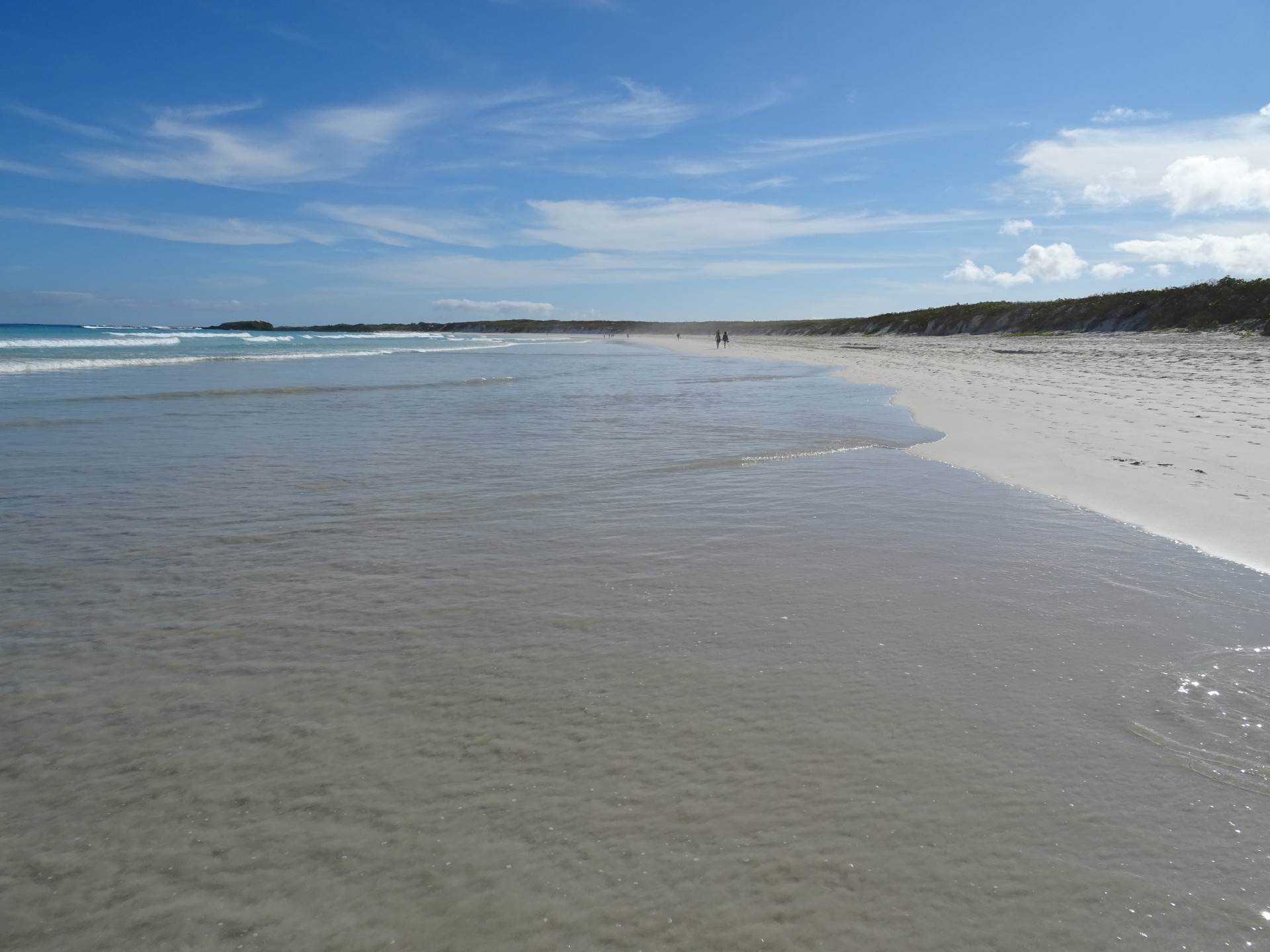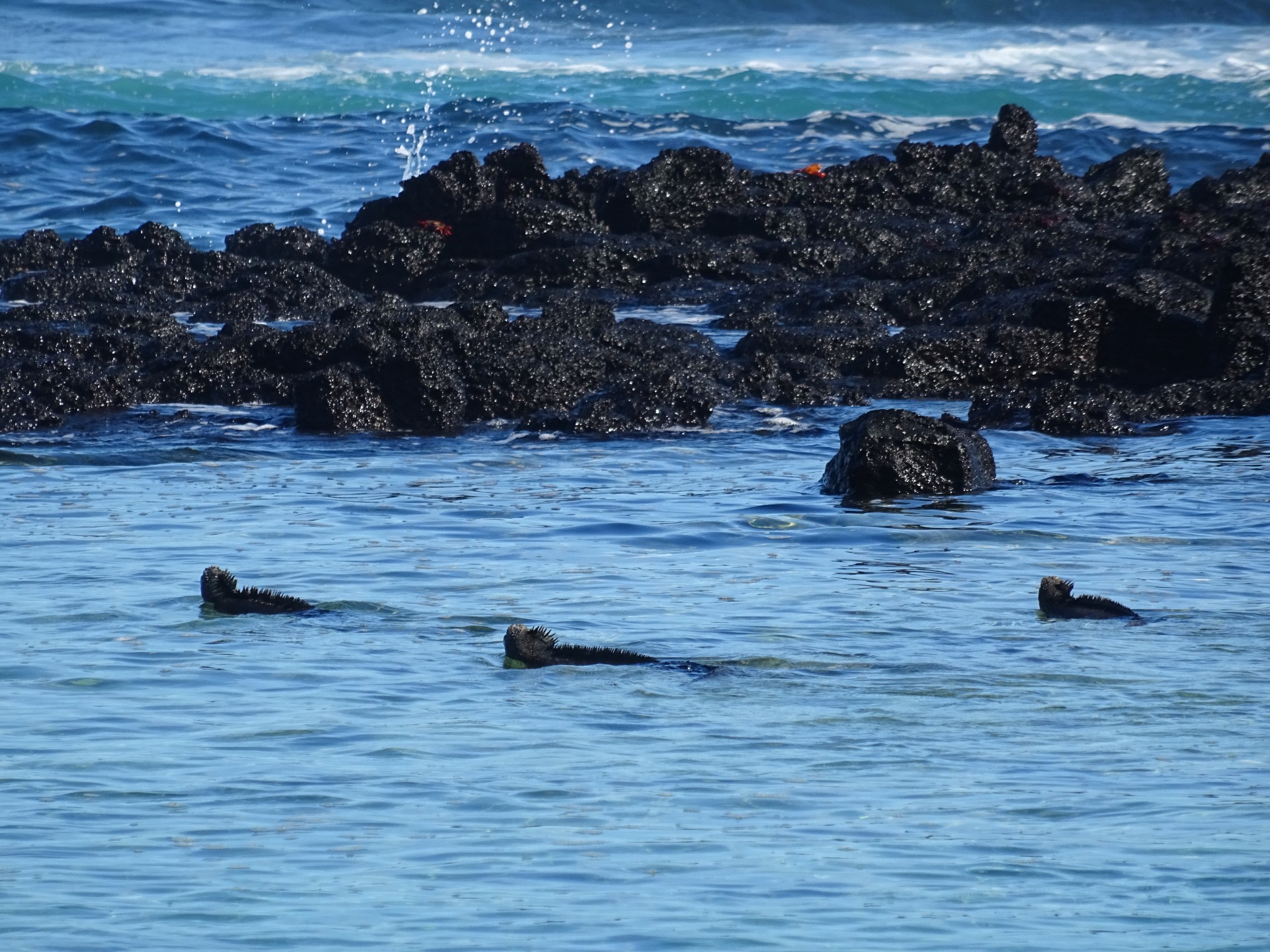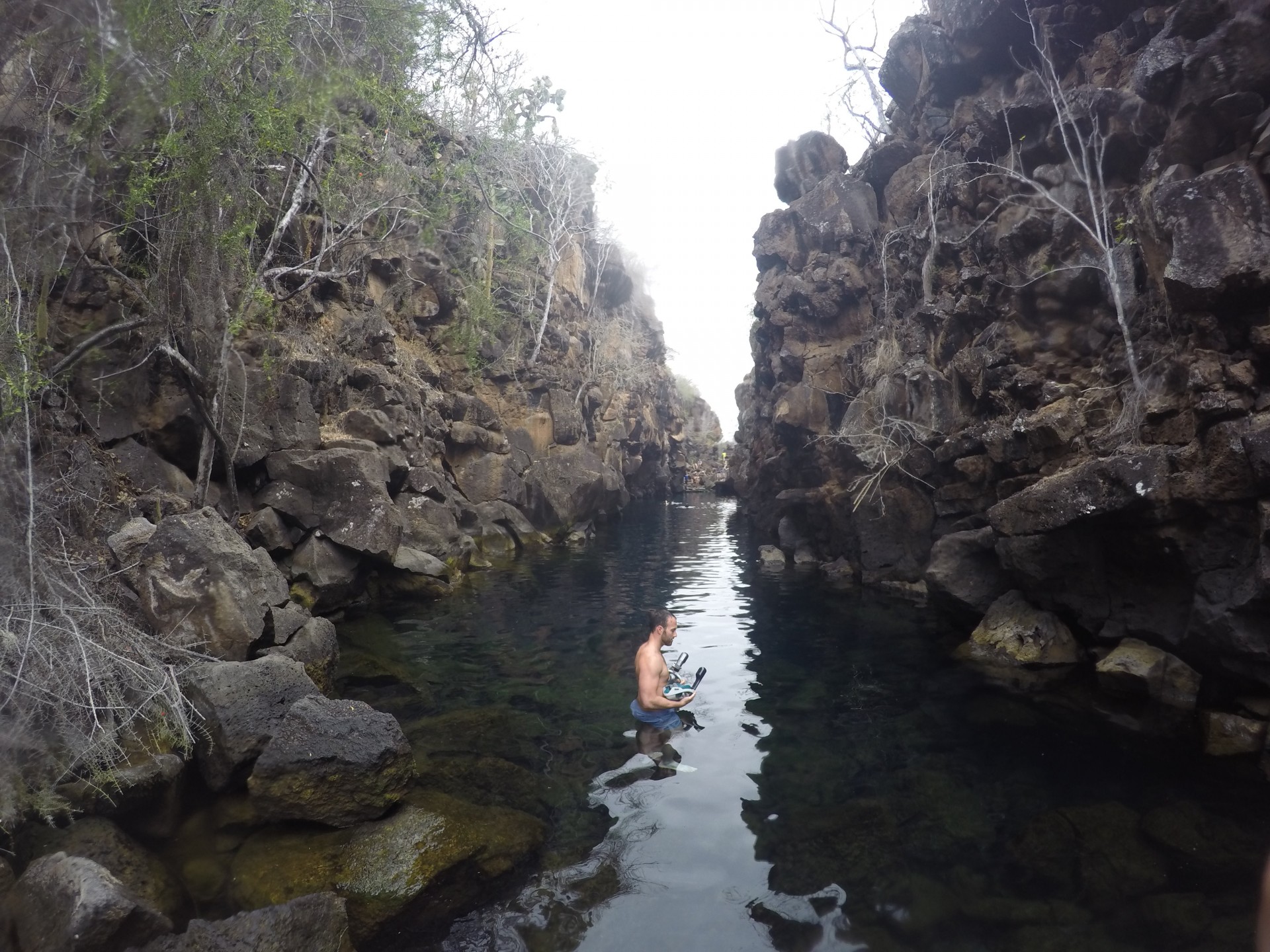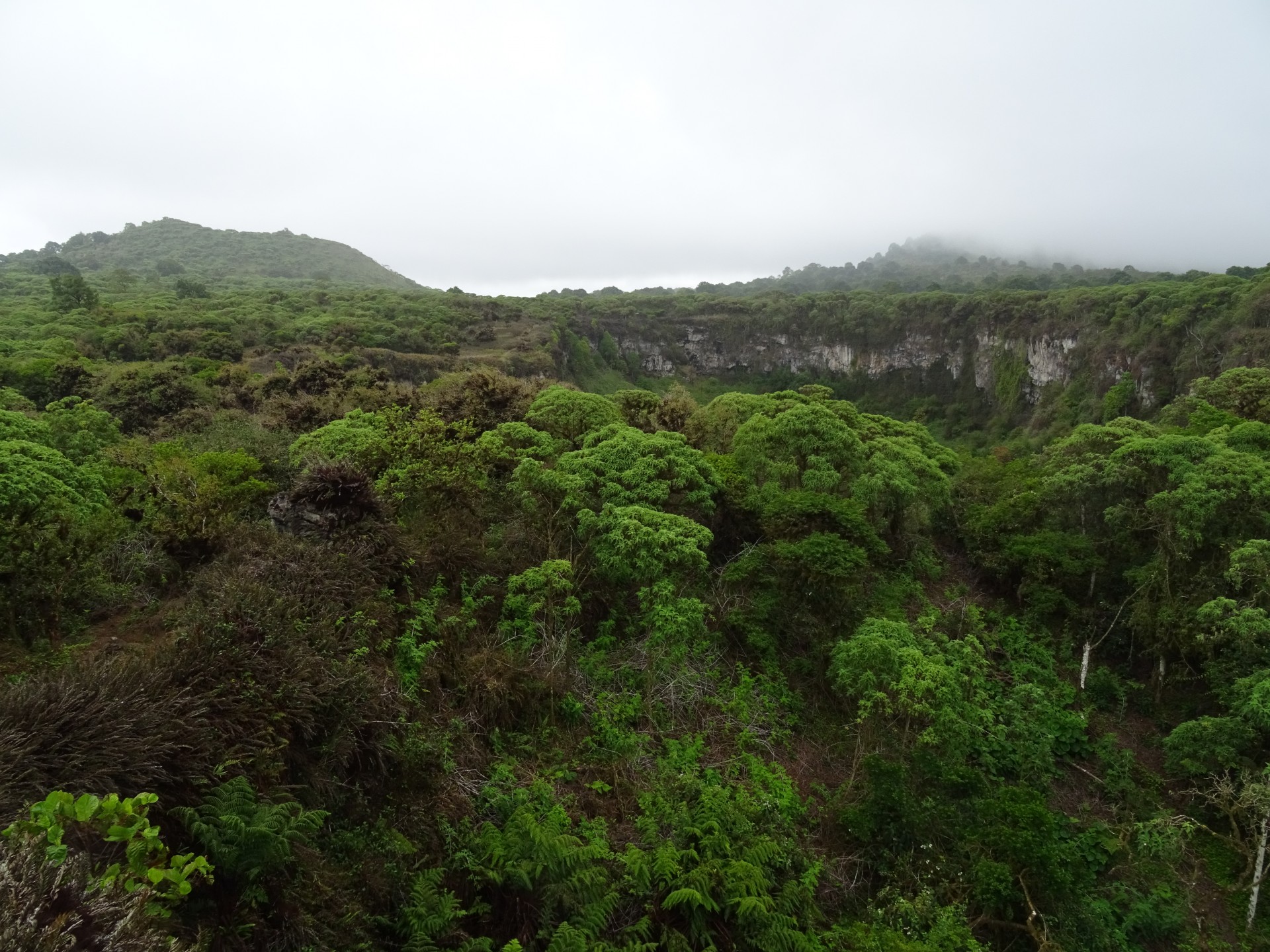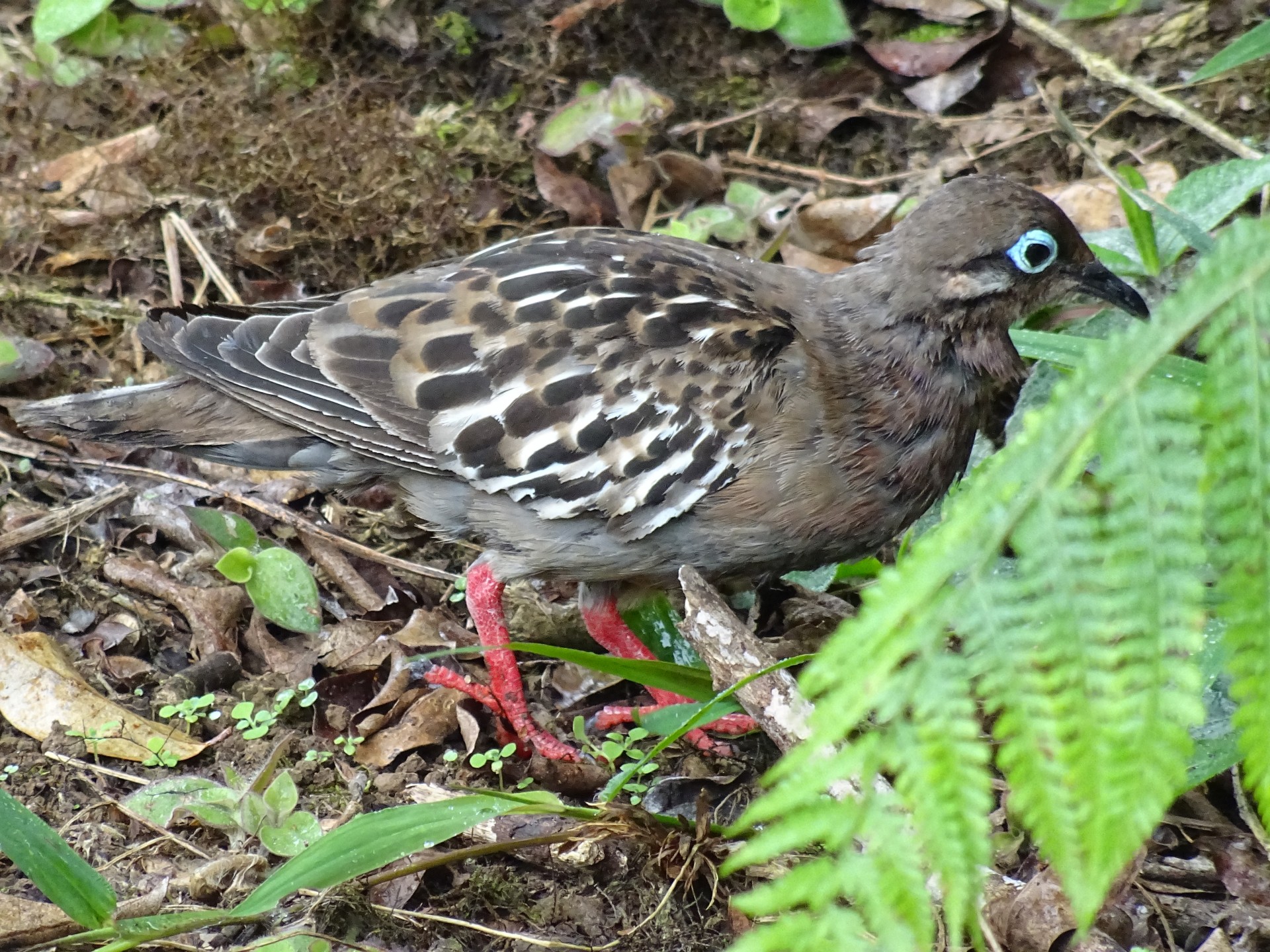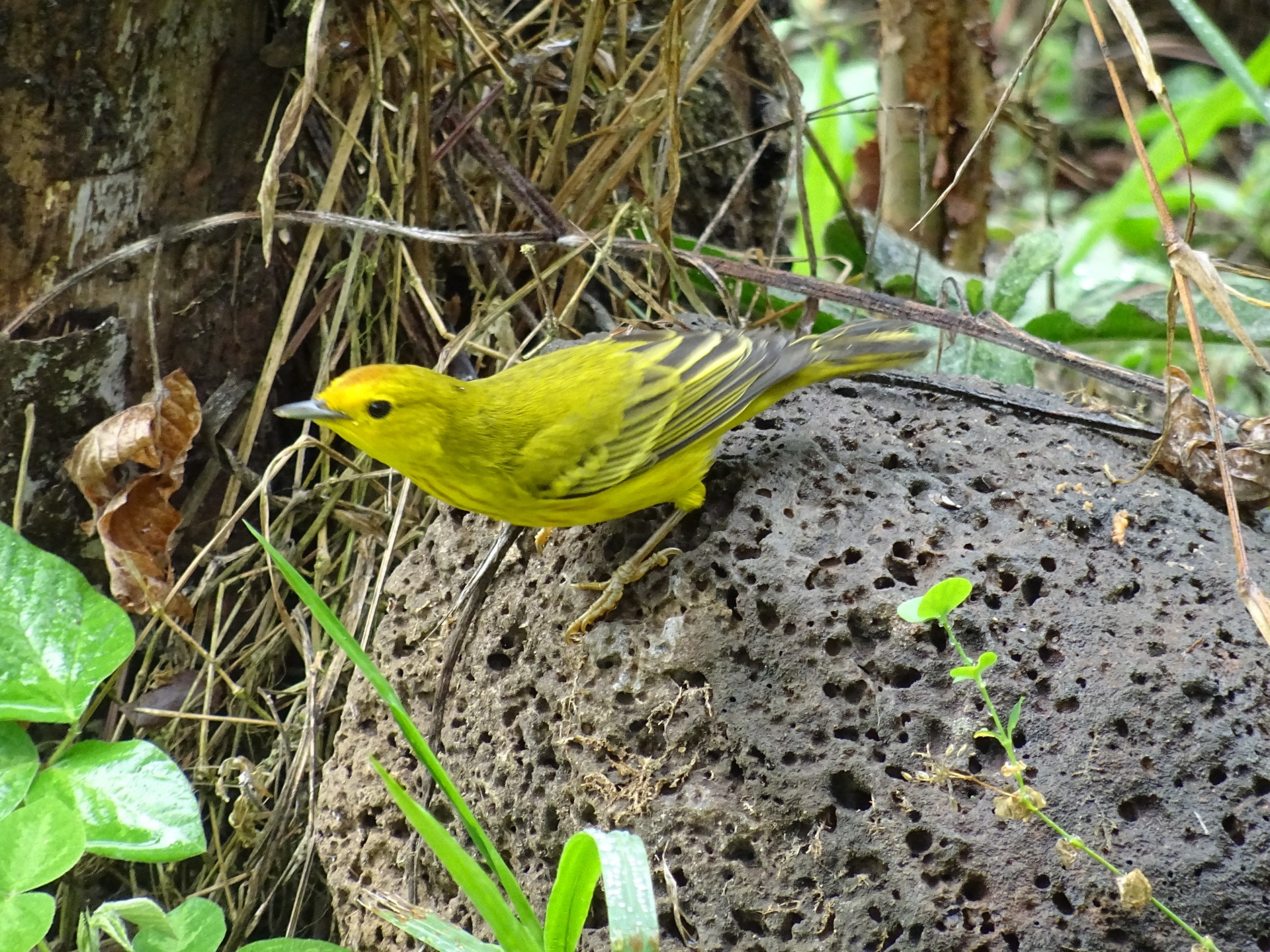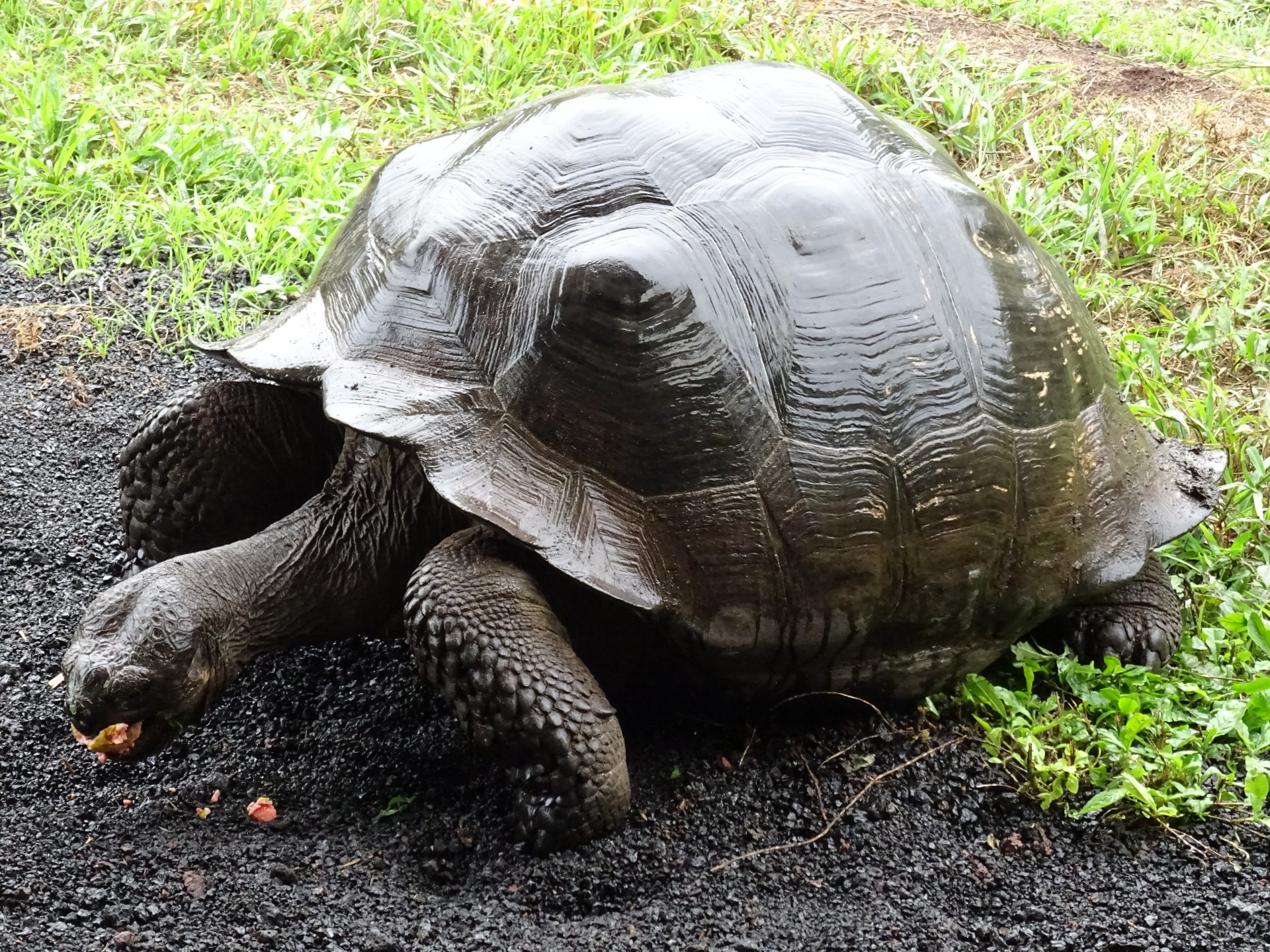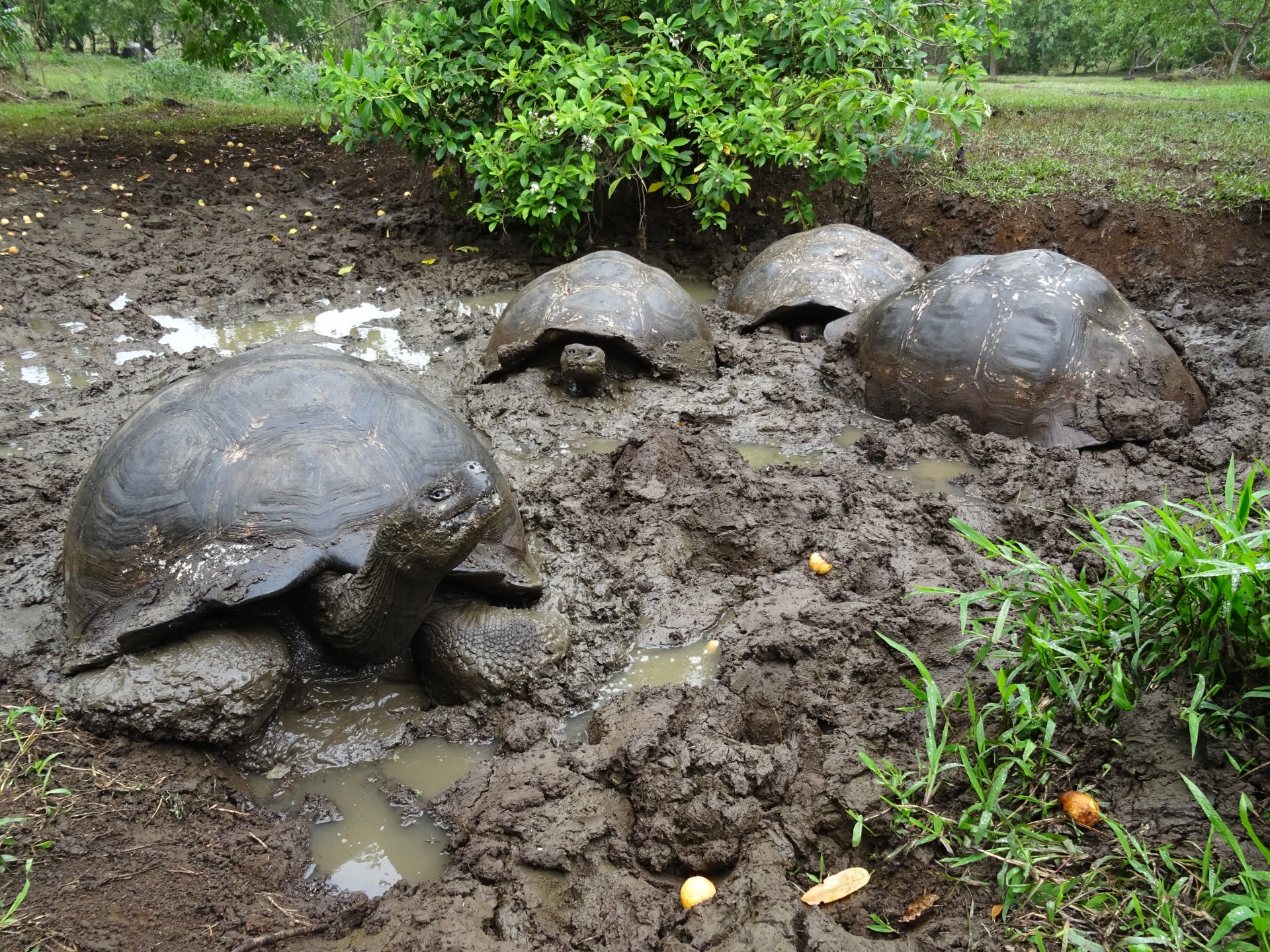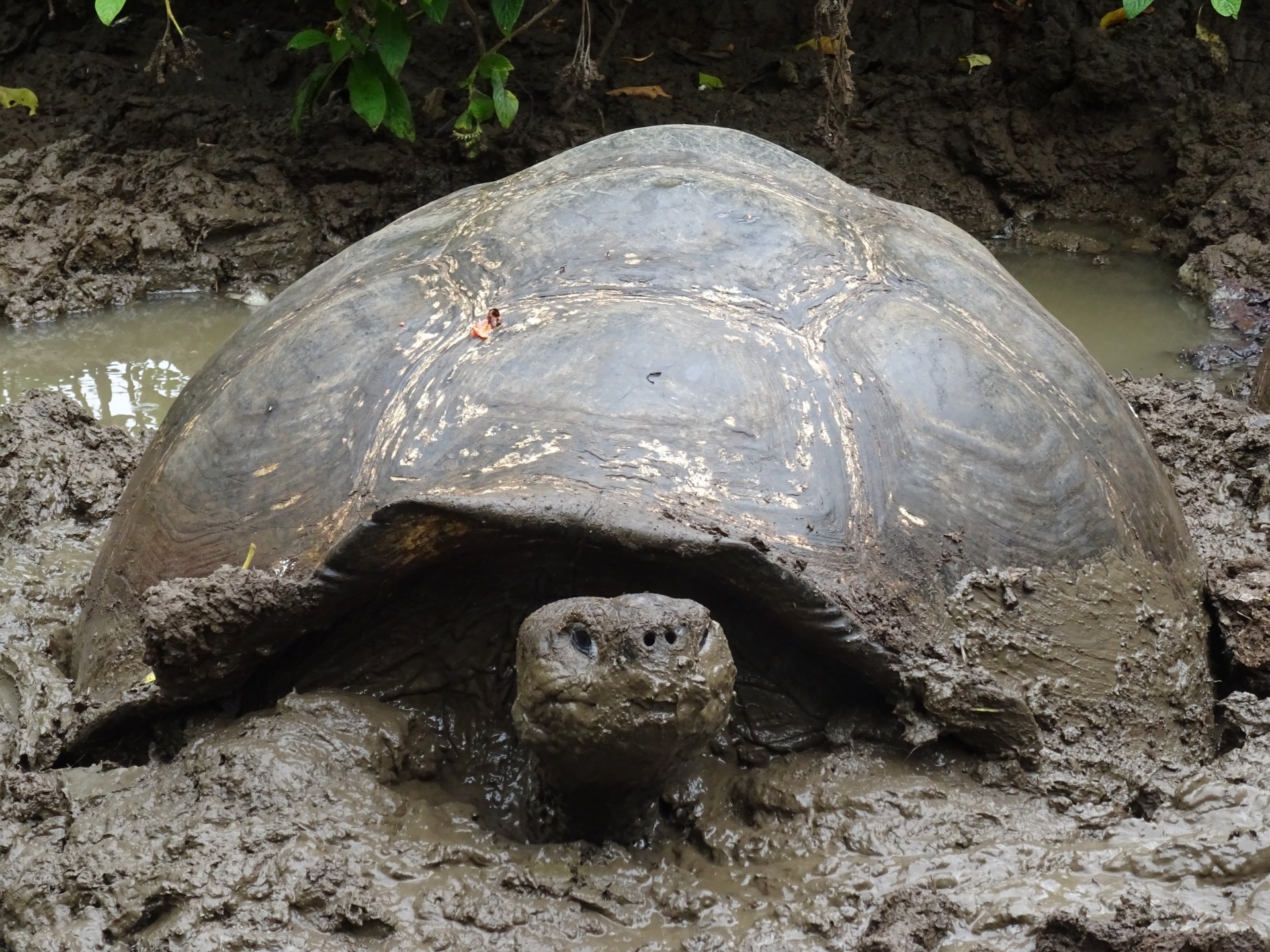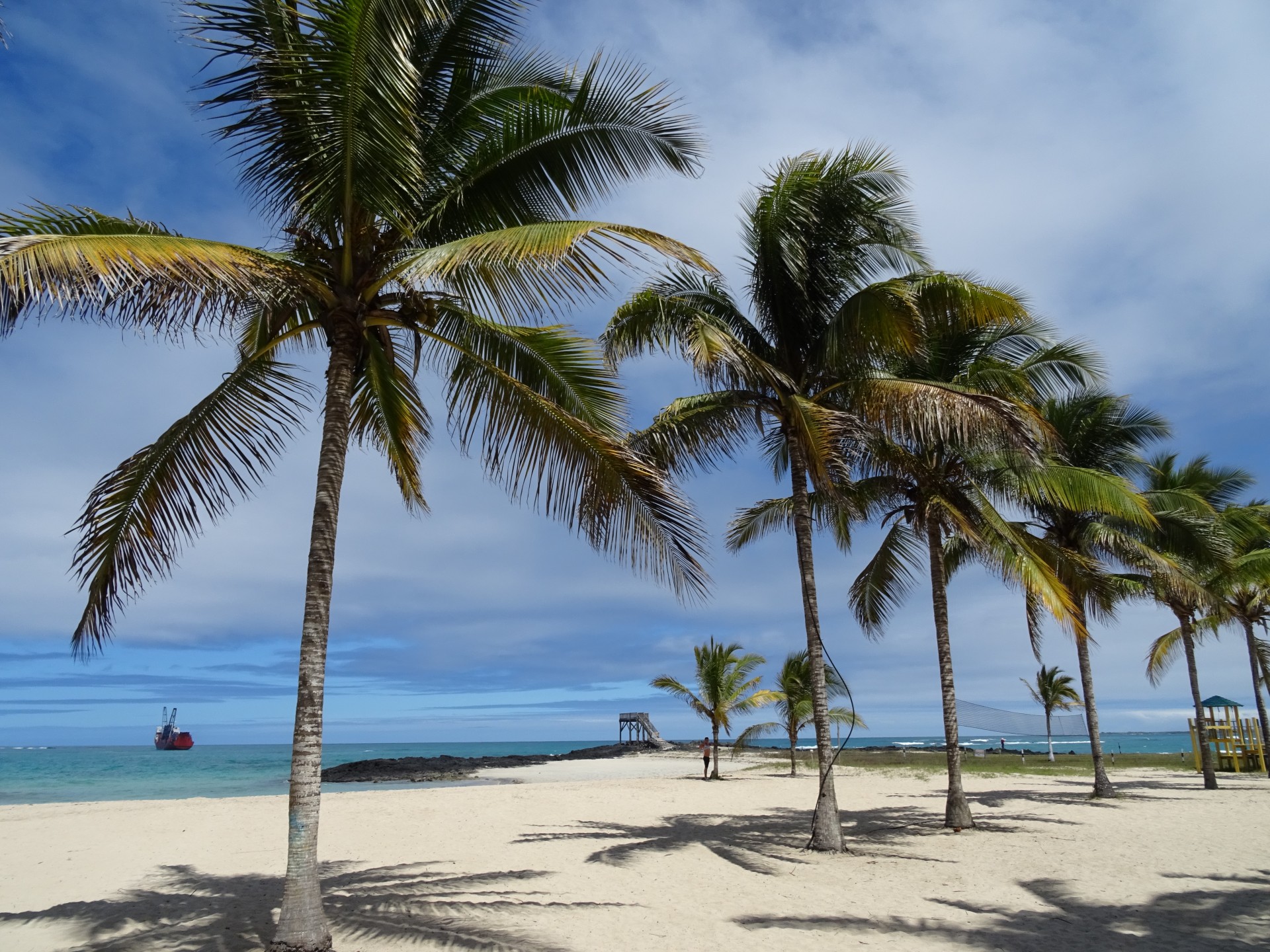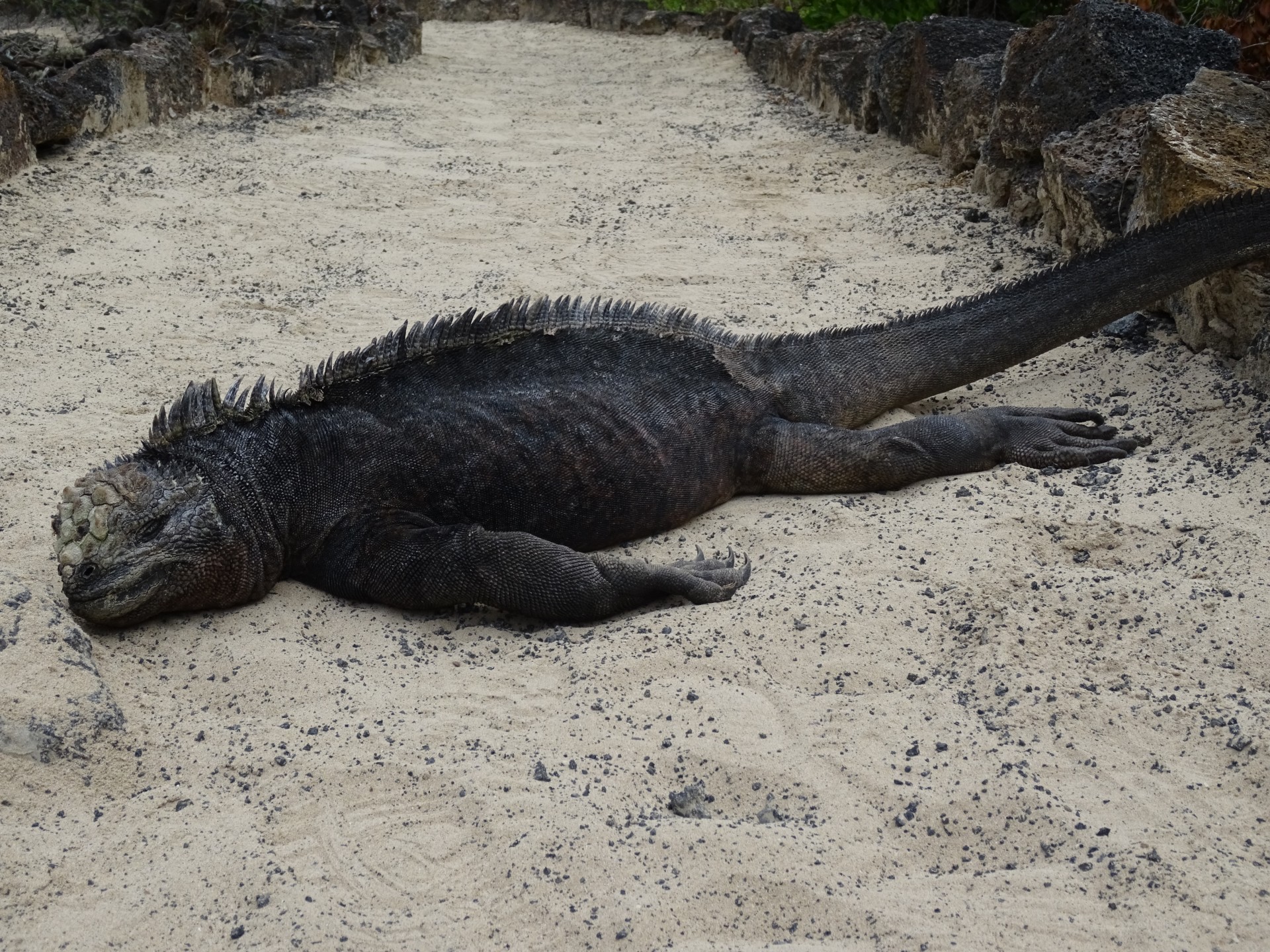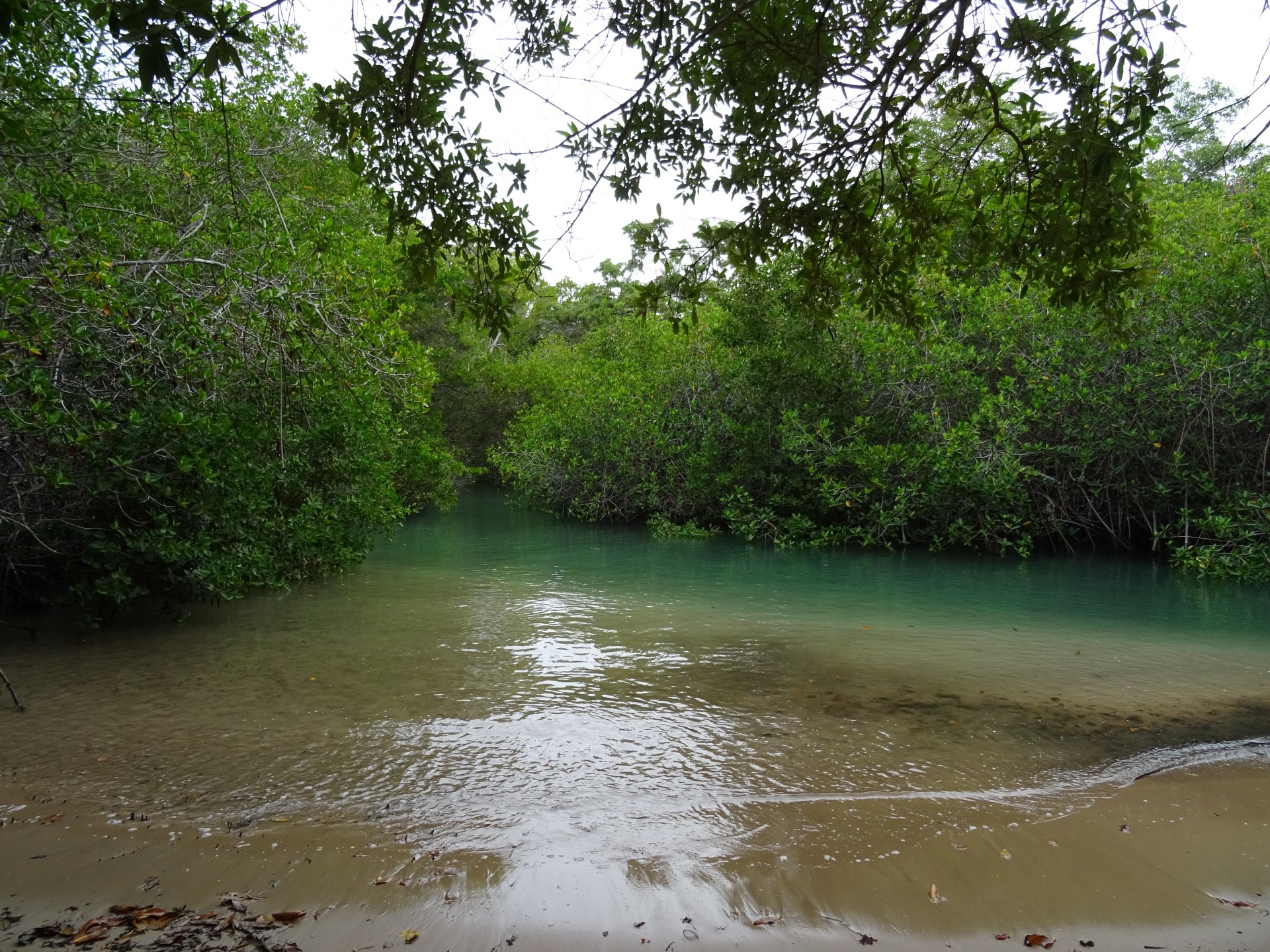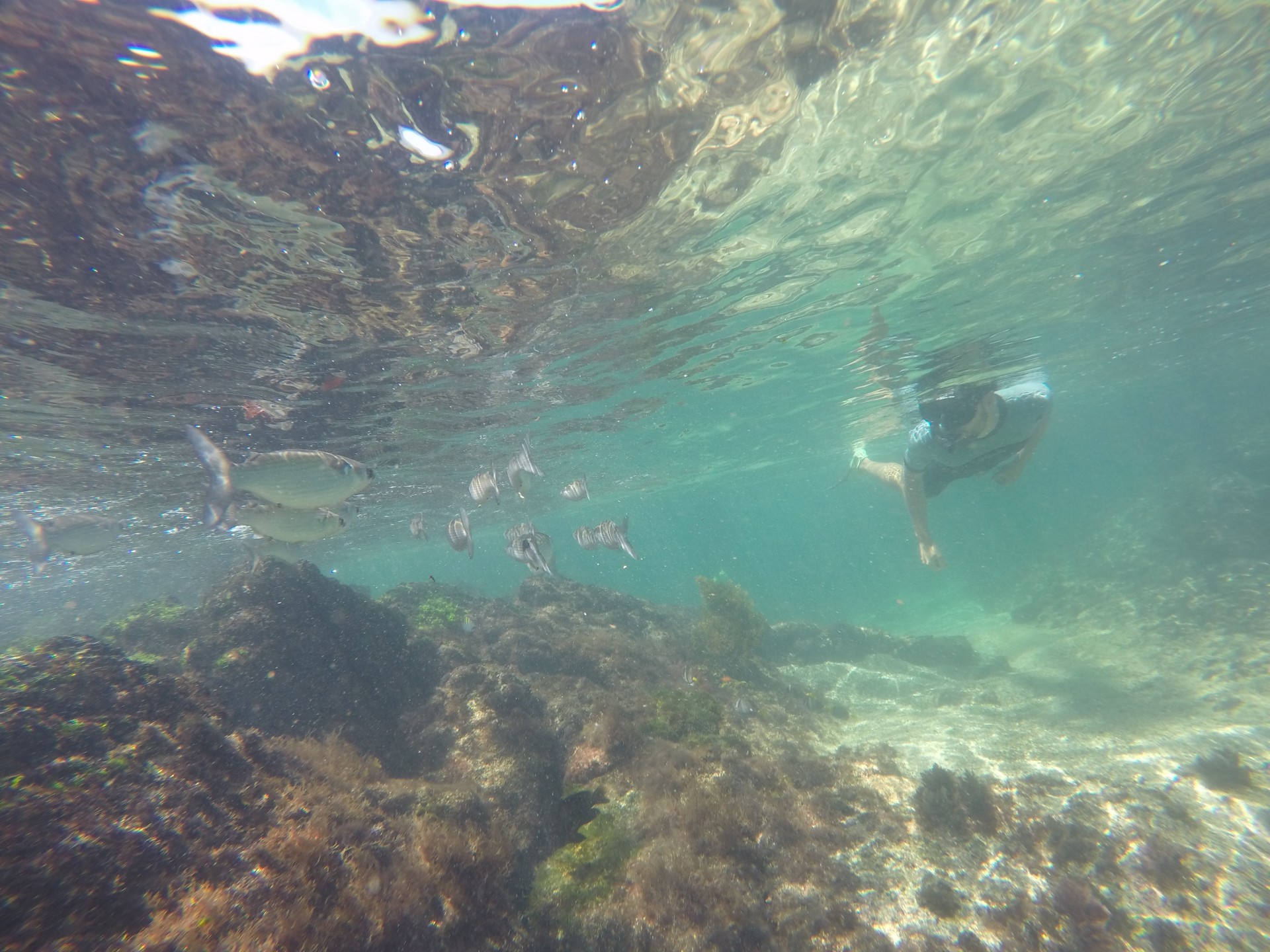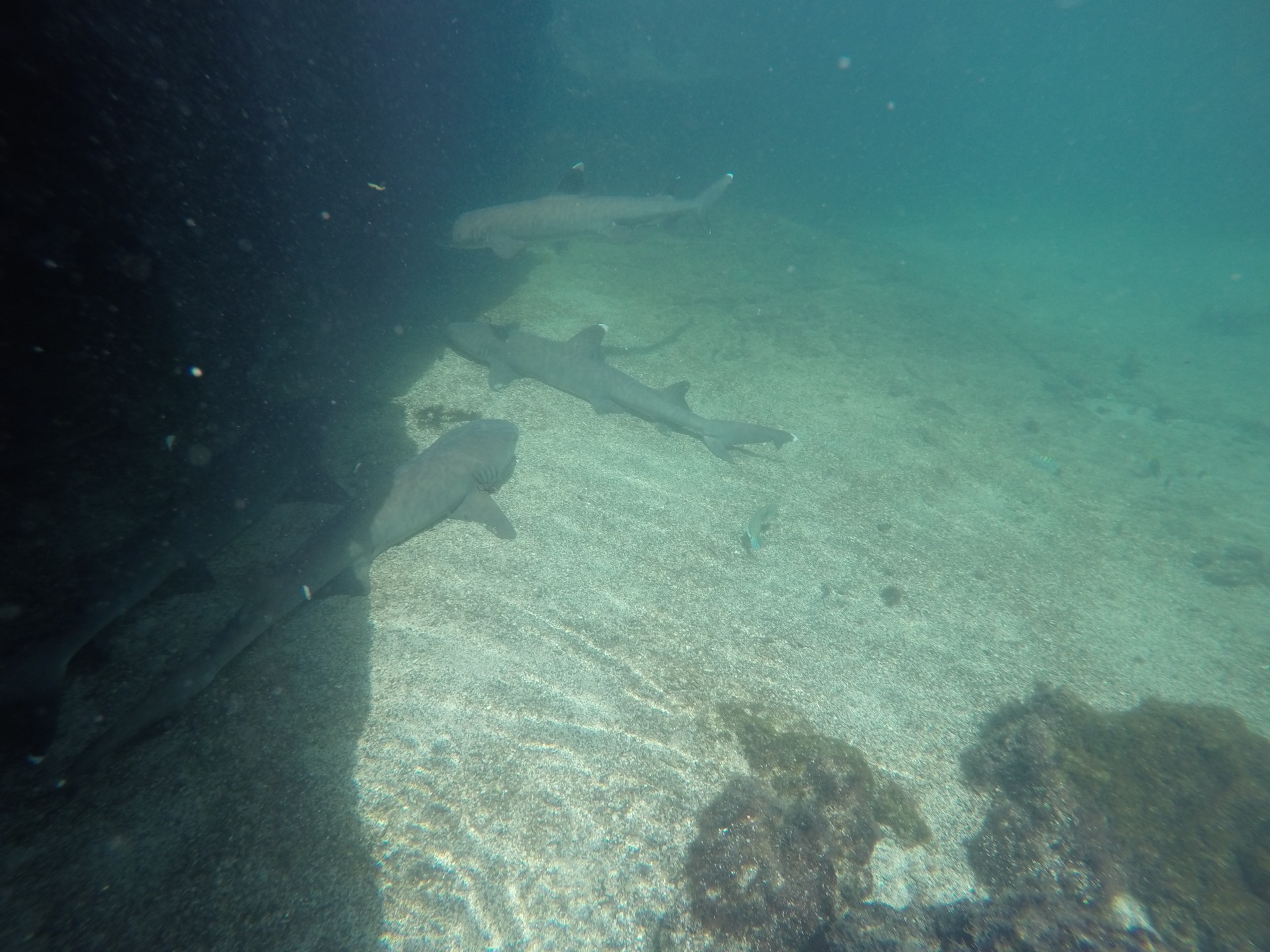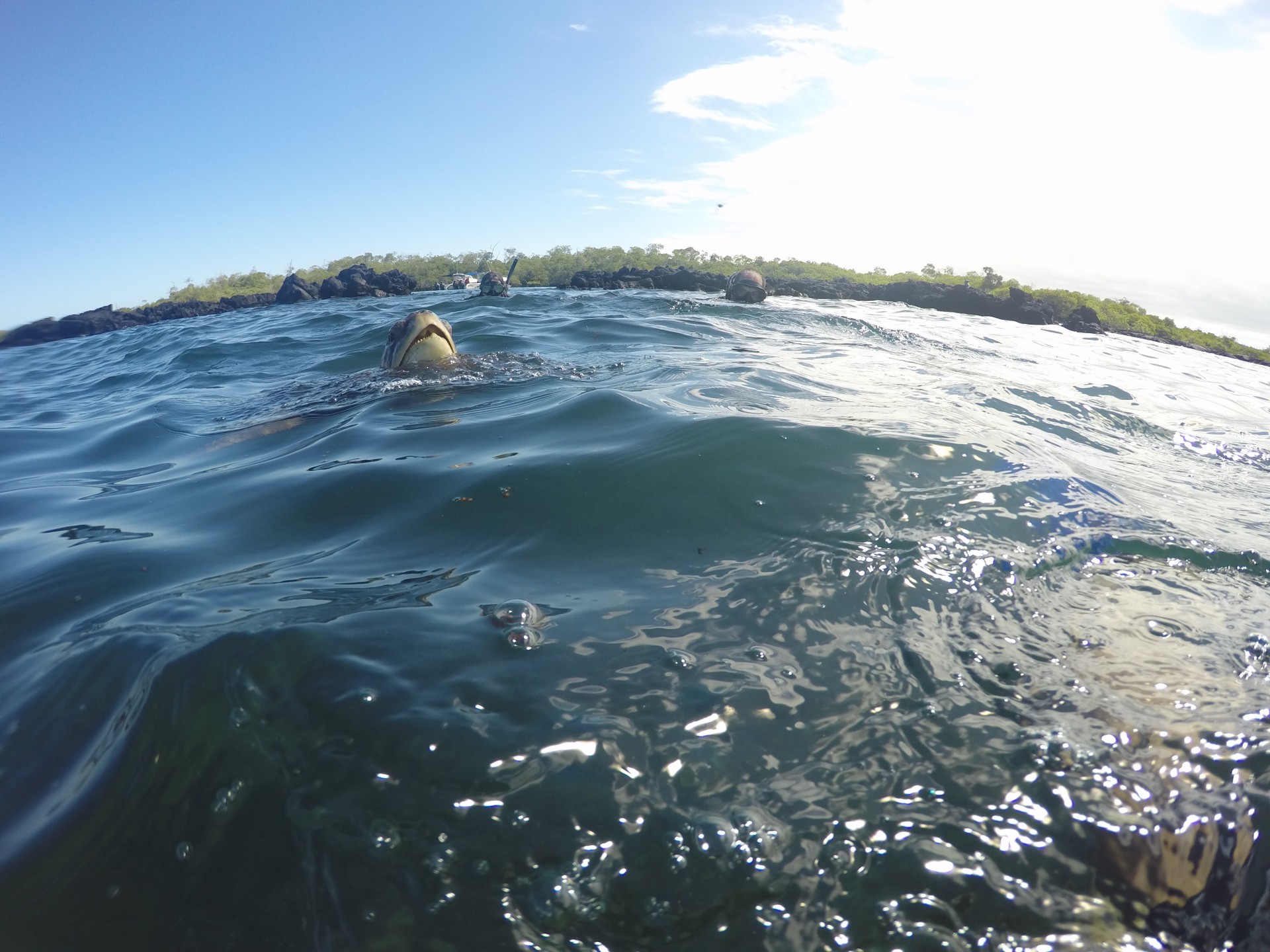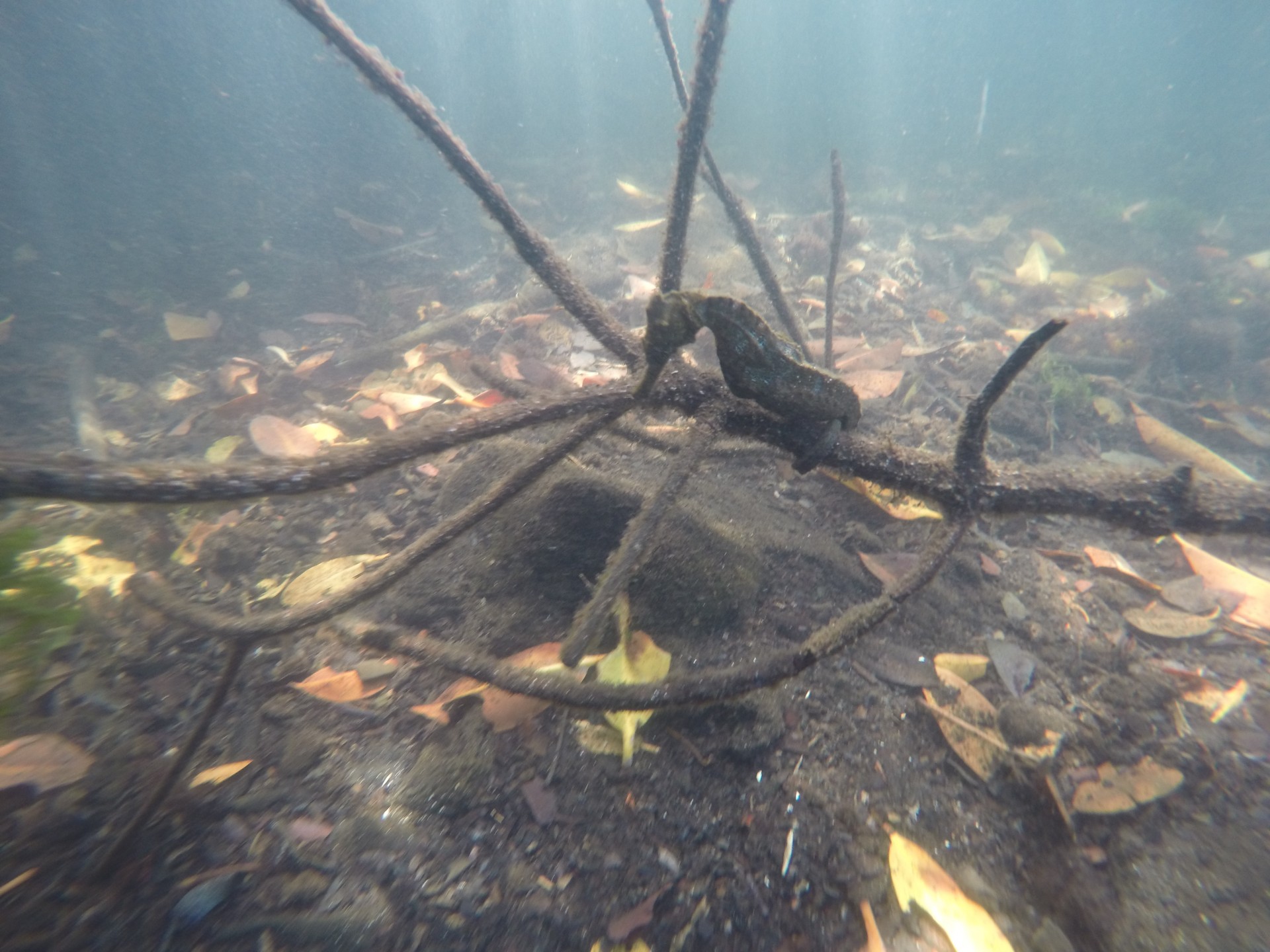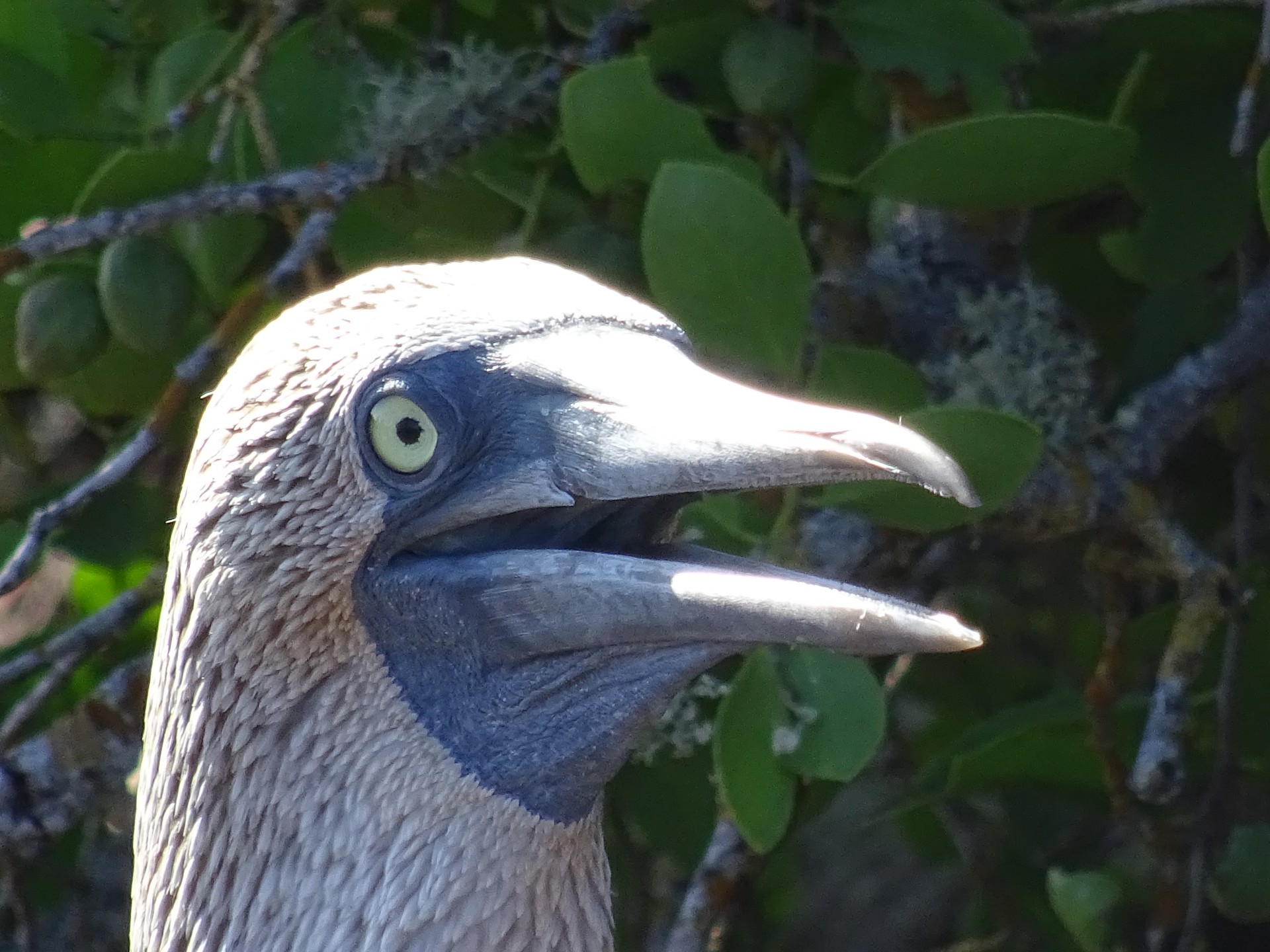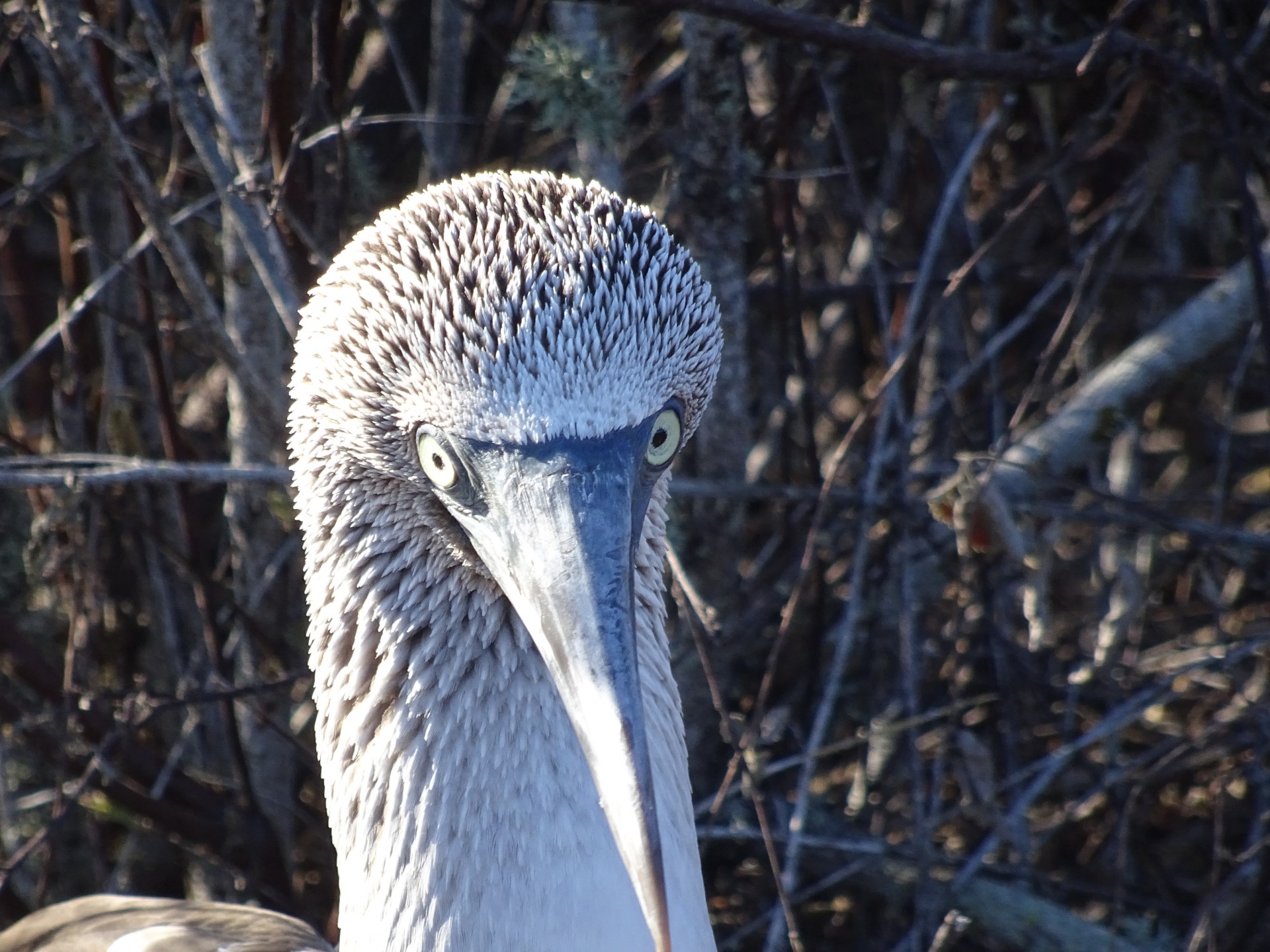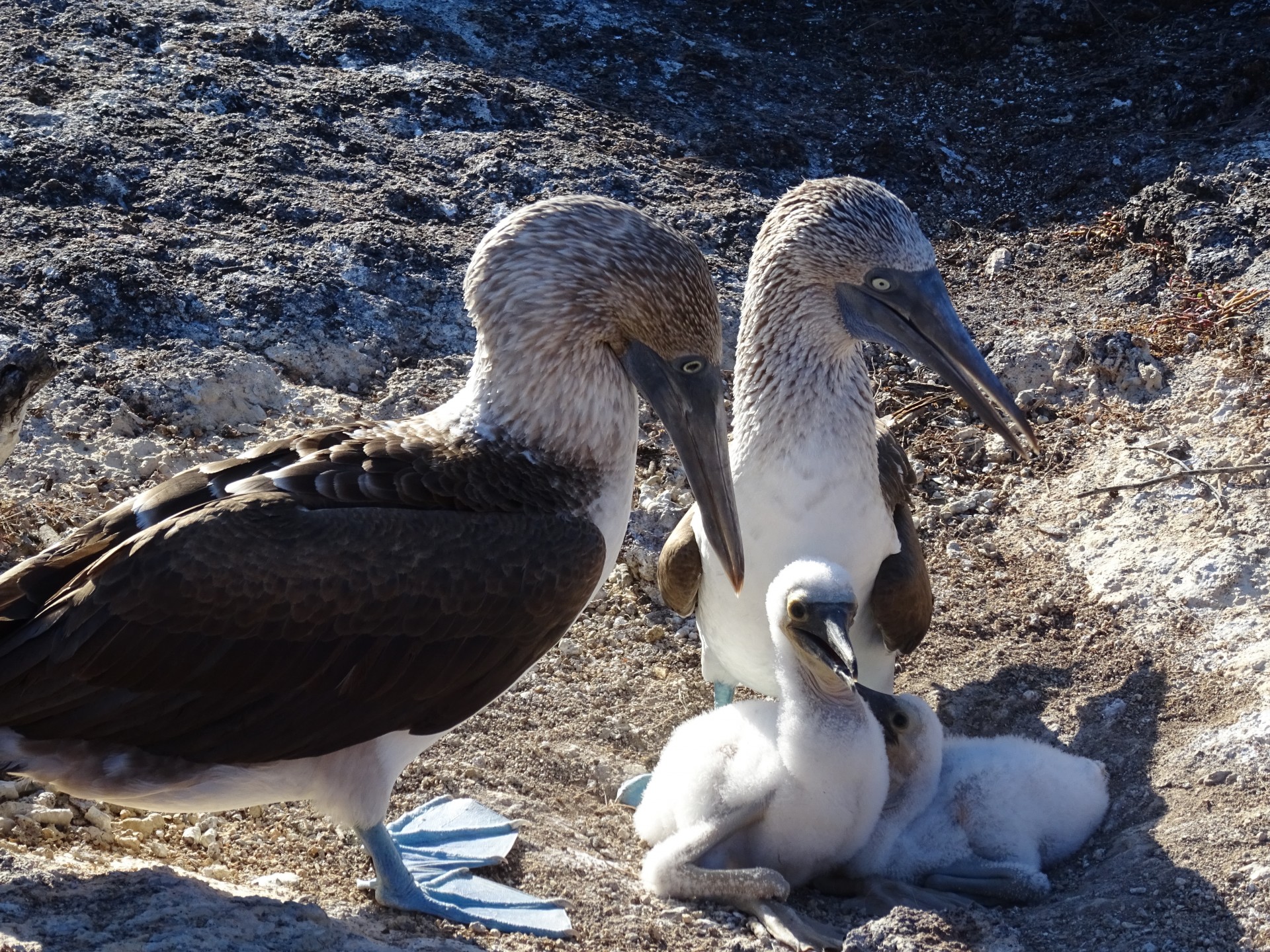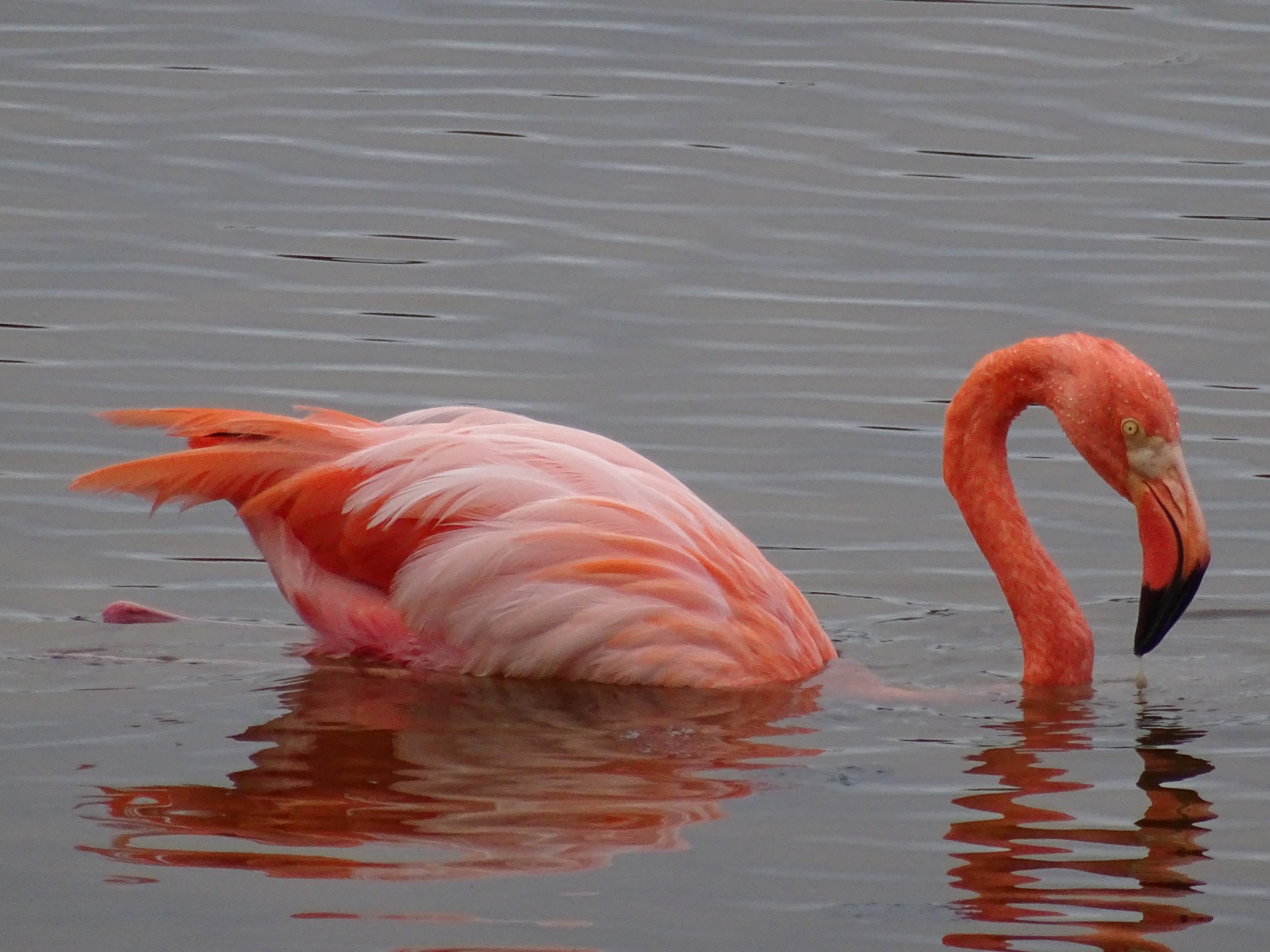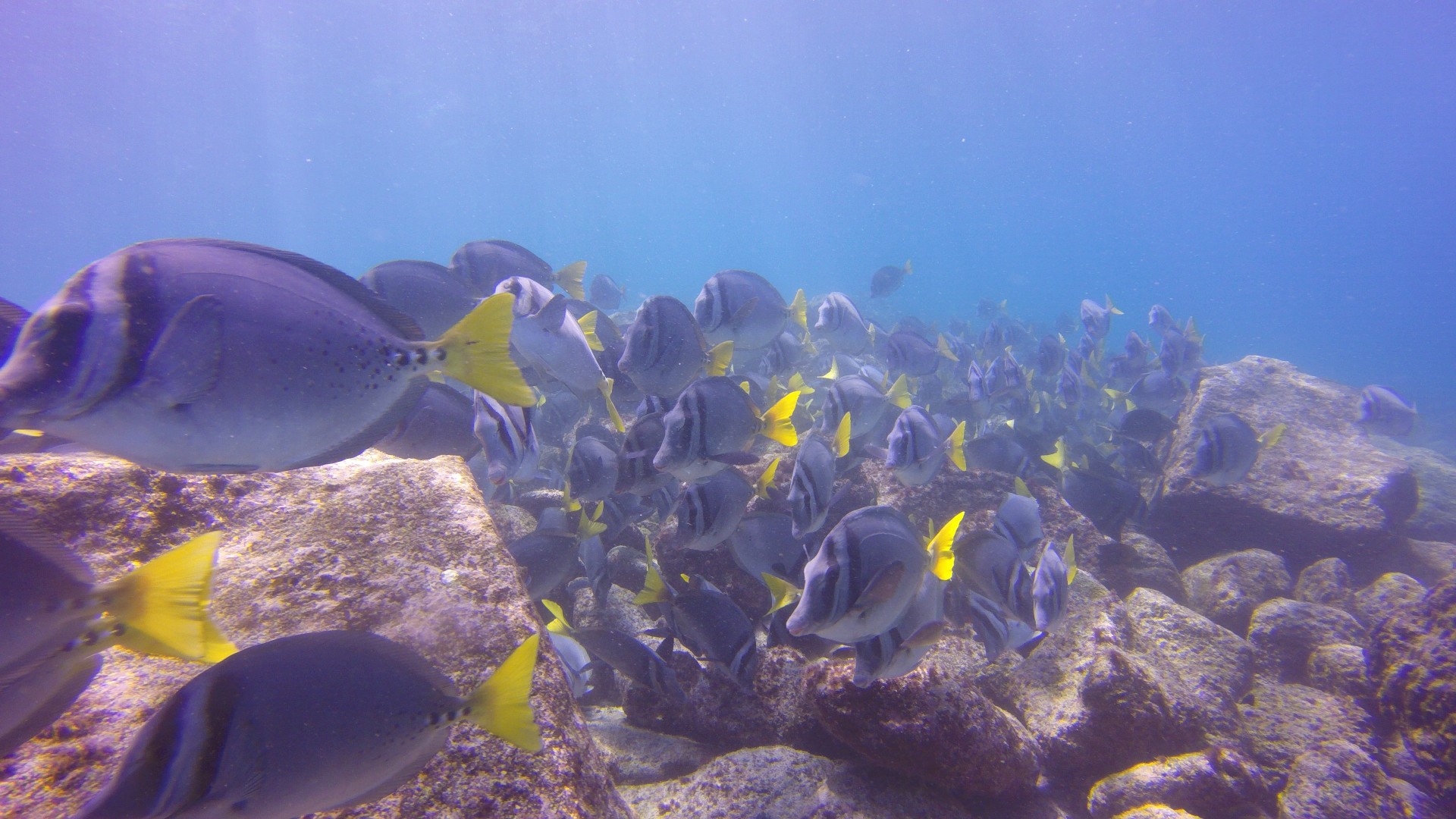It’s been a long time coming. This post, that is. I’m back home now, and although I’m a fair way behind, the end of the tale is within sight. First though, a monster post, which has ended up including many a picture more than I’d intended. I had to leave out so many…
Sunday 17th July 2016 –
The new offer swirling around in my head, I went with Philippe, an Ecuadorian guy in my hostel, to the Darwin Research Centre. It’s pretty interesting – lots of statistics and information about the wildlife on the islands, and the fight for preservation of the natural environment. Introduced species of both flora and fauna have great impacts on the native ones, and range from very difficult to nigh on impossible to get rid of. Some of the lizards and tortoises are also housed here, to ensure preservation, but to me this was less impressive. I understand the reasoning behind it, island species in particular can go extinct very quickly with freak environmental changes and the influence of humans, but the tortoises looked somewhat down on life, and didn’t have a great deal of room.
After a evening spent drinking, and discussing the possibility of trans-Pacific travel with Philippe and his friend Miguel, I ventured out into the harbour early the next morning for a meeting. I’d spoken to the captain in the early evening, but he’d been busy trying to organise some things at the time, so I returned to the thirty eight foot catamaran for an interview. Of both parties really – to check compatibility. Both the captain (a rather elderly Norwegian bloke) and his friend were there, which was just as well – it turned out the Norwegian was very deaf. As in, I would ask my question loudly, he would not hear, and the other guy would have to repeat it, shouting. We were sitting all of three feet from each other. Nevertheless, I asked away. Where would we first stop on land? The Marquesas, at least twenty days away. Would he teach me to sail? Yes. What would we eat? Lots of easily storable carbs. Would there be anyone else on the boat? No, if I was going (he was ideally looking for a couple). What would I be expected to do? Not too much – just help if things broke, etc. I was thorough, not wanting to miss anything, and told him if I decided to go I wouldn’t be able to for another week, as I had things I wanted to do in the Galapagos. I could give him an answer by Tuesday though, when a couple he’d spoken to were giving him their answer. Eventually, I would decide against it, betraying the sense of adventure. I hadn’t been convinced by the conditions on his boat (it was kind of dirty), and I felt communication was probably going to be an issue – if he couldn’t here me now, what would it be like in a storm? My sailing skills aren’t up to a solo venture.
Aside from a couple of walks to Tortuga Bay – a beautiful long, white sand beach close by, some kayaking, some disappointing snorkelling in a murky bay (where I cut myself up even more – it’s a habit), a trip to Las Grietas – a narrow canyon (pretty much a split in the island) filled with crystal clear water, and a visit to some lava tunnels, I did remarkably little over the next couple of days. At least, less than I’d hoped. I’d been trying to see if I could get a cheap price for a cruise around some of the islands, but since I had been to San Cristobal already, and would fly out of there too, I didn’t want to spend money on a cruise to go back again. This eliminated most of the cheaper ones. Where I really wanted to go was the western islands, and there just so happened to be such a boat on a trip that included rounding Isla Isabela and passing Isla Fernandinha, before heading past Santiago and Bartolome. The sticking point – price. Obviously. And they wouldn’t lower it, even the night before it left.
I was honestly prepared to blow the budget apart in what I figured would be a pretty unique experience, but it was just above what I could possibly spend. When I got rejected once more the next morning, I decided that I couldn’t waste any more time, and I wouldn’t wait till the boat left at midday. I had to make the most of my time now. I borrowed a bike from the hostel I’d been in before (maybe a little cheeky since I’d checked out a couple of days back, but they were $15 dollars a day elsewhere!) and took a taxi up into the hills.
After a discussion about running over a dog, in which my taxi driver seemed far more upset by the $400 he had to spend importing a new front grill to the islands than the fate of the dog, he dropped me off at los Gemelos. Luckily for me, it had just started to rain. Los Gemelos are two massive twin holes in the ground caused by the collapse of magma chambers, earlier in the island’s volcanic history. Looking down from above, they reminded me of something out of a Tomb Raider game, with the greenery lining the bottom, specifically out of Tomb Raider II really. That bit where you’re trying to climb out of the canyon, and there’s a tiger in with you? Ok, so there are no tigers in the Galapagos but that’s how my brain works.
The climate up on the hills was completely different to the dry coastal scrub, damp and drizzly weather contributing to totally different flora. The scalesia tree for example, endemic to the islands, is under threat from blackberries and other introduced species, but still widespread in the highland areas. That environment meant a wealth of wildlife was to be found. Mostly birds, I’ll admit, but while they’re not usually my thing, I did start looking about for them in the Galapagos. It started after seeing a few of Darwin’s finches – the ones that inspired him in his theory of evolution – and I started to see how many of the thirteen species I could find. Then there were others that just looked weird. “Gotta catch ’em all!” – isn’t that what everyone’s saying these days?
I cycled back down the hill to the village of Santa Rosa, still fairly high up, and then over the rolling hills to rancho El Chato. At least, I thought it was El Chato – I had to ask a guy driving a farm truck. It was, but it wasn’t the right El Chato – I’d ended up at the unmanned farm way too far down the road. He generously gave me and my bike a lift back to the right one.
It started raining again as I stepped back out, but that didn’t seem to be bothering the local inhabitants. Dozens and Dozens of tortoises were lounging about in the grass, in the pond, and in the mud, some of them even moving about, slowly as they do. Unlike those at the Darwin Centre, they all seemed to be genuinely loving life – big grins spread across their faces as they munched on grass or fallen guavas. One fella was so desperate for the tasty, fruity goodness that he was hoovering up gravel at the same time. We tried to warm him, but he was not to be stopped. It was honestly lovely to see them all so happy.
They had more lava tunnels at El Chato, too. Spread out across the whole island, the tunnels are the product of the outer edges of underground lava flows solidifying as the rest continued to run, and the formations left behind are really interesting. Really dark, too. I stayed long enough to ensure there was no more time to go anywhere else, still enthralled by the tortoises, and eventually cycled back to the main town of Puerto Ayora. It was more effort than I thought it would be.
The boat to Isabela the next morning was choppy. Very choppy. In fact, several people were sick as the rain splattered into the grey ocean, one elderly gentleman setting off the girl next to him in a wave of spewing. Wry smiles spread broke out among the survivors – at least it wasn’t us. For my part, the boat could be as choppy as it wanted, so long as I didn’t have to breathe engine fumes again. On the island, as I set about looking for a hostel once more, one guy aggressively tried to convince me that it was illegal for them to be priced lower than $25 in the Galapagos while simultaneously trying to attract my custom. I waved goodbye. Being that I’d stayed in three places for $15 by that point, I think probably not.
Isabela is the biggest island in the Galapagos archipelago, and being on the western side, is also one of the newest. It was created by the merging of five volcanoes, and those at the northern end of the island, those still over the hotspot where the Earth’s mantle melts the crust, are still active. Park restrictions mean you can’t get there unless on a boat tour though. In fact, the majority of the island is inaccessible with or without a guide – for preservation of course. Near the sole village of Puerto Villamil, much sleepier than its Santa Cruz counterpart, lie the humidales, or swamps, which you can visit on your own. Which I did.
The guy running my hostel said it was only four kilometres to the end of the trail, so I thought I could take it easy. I left at 2PM, after lunch (and tensely waiting for the updates for Murray’s Wimbledon quarter final match with Tsonga to arrive) and meandered down the coastal path. Every so often, I would dart down a side path to see what lay down there – a beach hidden in the mangroves, herons fishing, or just thousands of marine iguanas lying about – which was great, but I didn’t seem to be making any progress. I passed a 5km sign, followed by another, and eventually a 4km sign, but it wasn’t until 4.30 that I reached my destination. The Wall of Tears.
I’m going to put it out there and suggest that it doesn’t normally take me two and a half hours to walk 4km, even with diversions and walking in flip flops, as I was, but there was no point debating it (I just complained plenty later), so I took a look at the wall. It’s a wall, if I’m honest – the history is more interesting – criminals imprisoned on the Galapagos back in the nineteenth century were forced to build it out of volcanic rock. Some died in the process, too. Not great working conditions, I gather. Behind the wall, and up the hill, there were beautiful views of the island and two of its volcanoes, but I couldn’t spend too long – it was almost dark. I had to storm it back.
In keeping with my new busy schedule, I’d booked to go to Los Tuneles in the morning. Unfortunately, no one arrived to pick me up. Come to think of it, an American couple I’d met the day before had also booked to go, albeit with a different company, but were also not picked up. We waited for a while, too. When I went to the office to complain, they said that the guy had gone to our hostel to pick me up, twice even. I think my very pissed off demeanour changed their mind, and I was booked on the afternoon tour, coincidentally in the same group as Shaun and Jewel, the Americans. This turned out to be a great stroke of fortune. Los Tuneles were beautiful.
The early afternoon sun danced in the shallow water, as we snorkelled our way through the rocky tunnels, lighting up the sea bed in a cornucopia of beautiful colours. Fish of amazing shapes and sizes shone yellow, blue, pink and like rainbows, as the real life sea did its best impression of replicating Finding Nemo. It was absolutely magical. That was the least of it, though. We swam alongside White-tip reef sharks which were about six feet long, followed eagle rays through the sun, and circled around several giant turtles who were sweeping their way through the water. It was cold, but I didn’t care, and it paid off. Just before boarding the boat again, we found a seahorse. Nestled deep in the mangroves, it blended in perfectly as if it was just any other twig, completely still. I’ve never seen such a variety of animals in such an incredible setting, and I don’t know if I will again.
More was to come though. After a seriously impressive show of skill from the boat captain, timing his approach to another bit of shore before blasting it between the large waves and numerous rocky islands, we reached a colony of blue footed boobies. If you don’t know what they are, they’re pretty much the most iconic species of bird in the Galapagos, and the source of the most popular souvenirs. Who doesn’t want an ‘I Love Boobies’ t-shirt? That’s a joke that just can’t go wrong. Regardless, with their bright blue feet and funny faces, they’re a constant source of intrigue. Not only did I get to see them really close up, but I saw boobie chicks, one female lose all dignity by defecating all over her feet (she didn’t seem to care), and got a front row seat to the boobie mating dance. The poor lad must have been devastated by his rejection.
Volcan Sierra Negra is the only volcano that you can actually visit on the island, and being that it’s in the south, it’s inactive. That’s probably for the best considering what happened last time I visited a volcano. It was cloudy when we started off though, and along with Connor from my hostel, and Shayne, Dmitry and the rest of our group, we were concerned that we wouldn’t see anything. At least I wore real shoes this time.
Eventually the weather cleared up, the sun started baking down, and we started to see stuff again – specifically the crater – apparently the second largest in the world. This meant it was time to eat lots of guavas and passionfruit. These tasty devils are actually invasive pest plants here, so we were encouraged to eat as many as we wanted – not that it would make any difference. We soon lost that option though, as we advanced into the bare lava fields, the rock, rock and more rock interspersed by a few resilient cacti. This was where, after the crater sealed over, the lava started blasting from when the pressure built up. Best of all though, one of my favourite views in the Galapagos – over Bahia Elizabeth to the north, two volcanoes, Isla Fernandinha, and the strait inbetween. A lost world.
I stayed another day on Isabela, full of more activities. Watching bright orange Galapagos flamingos with Shayne and Dmitry, catching sight of the seemingly rare Galapagos penguin (including an albino one) and snorkelling some more off Las Tintoreras, a series of small rocky islands just off the coast. Swimming with sea lions, turtles, manta rays and sharks never gets old. Then, almost disappointingly, I had to get the boat back to Santa Cruz. The return leg had begun.
Wait though. Hang on a minute. I had one last trick up my sleeve. When I’d been on the island before, I’d asked around to see if there were any other great snorkelling spots (or other explorable places) about, only another possible excursion had cropped up. Once again up at the crack of dawn, I was driven to the north end of the island, bundled onto a boat, and manouvered over to the coast of North Seymour island. Here, I would go diving.
‘But you don’t have a diving licence Doug’. That is a very good point, and one that I too had thought an insurmountable barrier. That is, until I learned of the Discovery Dive. Basically, for a minimal price more than a regular dive in the Galapagos (already very expensive anyway) I could be taken to dive. Two conditions though – I had to have a dive master basically to hold my hand through the dive, and I could only go down to twelve metres deep. It was expensive so I had mulled it over for a few days, and looking online had suggested that many people just end up panicking, or too busy fiddling with their instruments (not that kind!) to see anything. In the end though, there was only one worthwhile question. How often do you get the chance to dive in the Galapagos?
The sea became insane as we neared the North Seymour coast, throwing us about like rag dolls as the dive master went through procedure with everyone. North Seymour, besides being one of the best places to dive in the Galapagos, is meant to be good for beginners, but I felt it possibly wasn’t that day. When one of the girls (who had been on a dozen dives prior to this) had trouble sinking with the waves and the cold, my suspicions further increased. More than anything else though, I was excited beyond belief, so when the time came I was ready. Sinking in the Pacific.
Immediately I set about controlling my breathing, figuring out how to sink, and popping my ears. That last one had been my biggest worry – if I couldn’t do that, I couldn’t dive – so I’d practiced it the last couple of times I’d gone snorkelling. It paid off – everything went smoothly, and soon I was silkily sailing along, in direct contrast to the more experienced Ecuadorian bloke in our little team. I was swimming with the fishes and turtles. No, I was a fish, at home in my natural habitat.
We probably only dove to about eight metres, but it was awesome, so when I was asked if I wanted a second dive, there was only one obvious answer. The Ecuadorian guy decided against a second, so the dive master and I went with the main group this time – almost straight after I’d come out, this time near Mosquera island. Like a pro I sank and wiggled my way about in the water, so good that the dive master and everyone else said I was a natural. I remained modest, as ever. Despite the rules, at one point we ended up down at 20 metres, with the rest of the group. That wasn’t to be the end of it though. No. The best part? We saw hammerheads.
Yes, separated from the rest of the group, we watched as first one hammerhead shark appeared in view, and swam around to our left. Then, four or five more appeared, slunk their way past to our right. So excited I was that my previous control was lost as I sucked up my air at rapid rate. I tried to follow, but they were too speedy. It was my last Galapagos dream come true, and there were no words left to describe how awesome, amazing, magical, stupendous and awe inspiring it was. What better way to end things than seeing hammerhead sharks?




